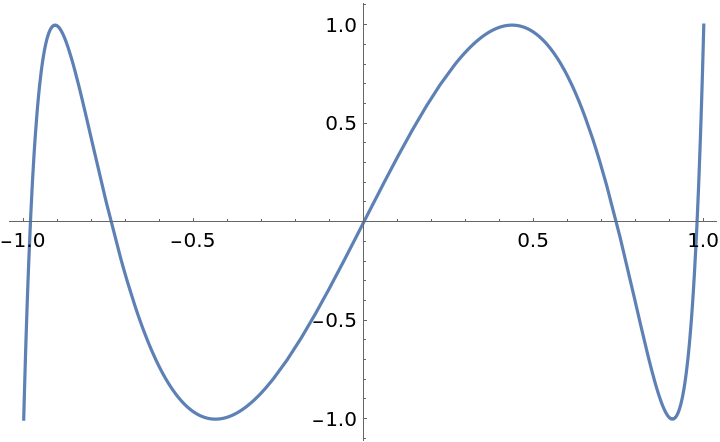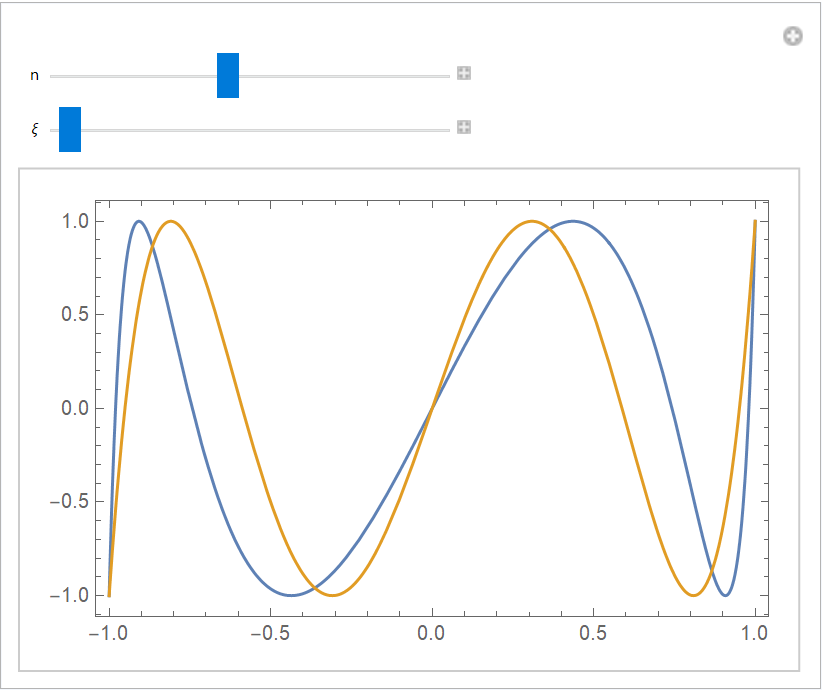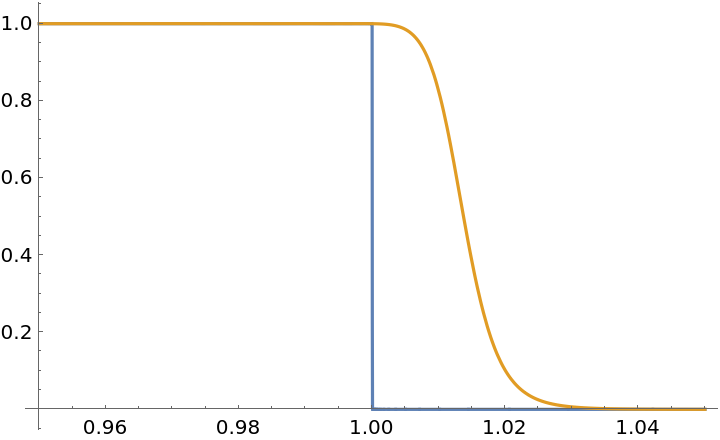Wolfram Function Repository
Instant-use add-on functions for the Wolfram Language
Function Repository Resource:
Evaluate the elliptic rational function
ResourceFunction["EllipticRationalR"][n,ξ,x] gives the elliptic rational function Rn(ξ,x). |
Evaluate numerically:
| In[1]:= |
| Out[1]= |
Plot R5(1.1,x):
| In[2]:= |
| Out[2]= |  |
Evaluate symbolically:
| In[3]:= |
| Out[3]= |  |
Evaluate to high precision:
| In[4]:= |
| Out[4]= |
The precision of the output tracks the precision of the input:
| In[5]:= |
| Out[5]= |
EllipticRationalR threads elementwise over lists:
| In[6]:= |
| Out[6]= |
Compare an elliptic rational function and a Chebyshev polynomial:
| In[7]:= | ![Manipulate[
Plot[{ResourceFunction["EllipticRationalR"][n, \[Xi], x], ChebyshevT[n, x]}, {x, -1, 1}, Axes -> None, Frame -> True, PlotRange -> All], {{n, 5}, 1, 10, 1}, {{\[Xi], 1.1}, 1.001, 5}, SaveDefinitions -> True]](https://www.wolframcloud.com/obj/resourcesystem/images/641/6416b079-273c-4cf7-8280-244e3927a921/3455cccdff610437.png) |
| Out[7]= |  |
Use the elliptic rational function to construct the best minimax approximation of a unit square pulse:
| In[8]:= | ![With[{\[CurlyEpsilon] = 0.01, n = 32, \[Xi] = 1.0001}, Plot[1/(1 + \[CurlyEpsilon]^2 ResourceFunction["EllipticRationalR"][
n, \[Xi], x]^2), {x, 0, 2}, Exclusions -> None]]](https://www.wolframcloud.com/obj/resourcesystem/images/641/6416b079-273c-4cf7-8280-244e3927a921/0d4685d4def910cc.png) |
| Out[8]= |  |
Compare with an approximation using ChebyshevT:
| In[9]:= | ![With[{\[CurlyEpsilon] = 0.01, n = 32, \[Xi] = 1.0001}, Plot[{1/(1 + \[CurlyEpsilon]^2 ResourceFunction["EllipticRationalR"][
n, \[Xi], x]^2), 1/(
1 + \[CurlyEpsilon]^2 ChebyshevT[n, x]^2)}, {x, 0.95, 1.05}, AxesOrigin -> {0.95, 0}]]](https://www.wolframcloud.com/obj/resourcesystem/images/641/6416b079-273c-4cf7-8280-244e3927a921/47184e4aef9c156a.png) |
| Out[9]= |  |
Compare EllipticRationalR with the definition:
| In[10]:= | ![With[{n = 6, \[Xi] = 4/3}, {ResourceFunction["EllipticRationalR"][6, \[Xi], x], JacobiCD[
n EllipticK[
ResourceFunction["EllipticRationalR"][n, \[Xi], \[Xi]]^-2]/
EllipticK[\[Xi]^-2] InverseJacobiCD[x, 1/\[Xi]^2], 1/
ResourceFunction["EllipticRationalR"][n, \[Xi], \[Xi]]^2]} /. x -> RandomReal[{-1, 1}]]](https://www.wolframcloud.com/obj/resourcesystem/images/641/6416b079-273c-4cf7-8280-244e3927a921/2f42ade5094bec74.png) |
| Out[10]= |
Verify the inversion identity:
| In[11]:= | ![With[{n = 6, \[Xi] = 4/3}, FullSimplify[
ResourceFunction["EllipticRationalR"][n, \[Xi], x] == ResourceFunction["EllipticRationalR"][n, \[Xi], \[Xi]]/
ResourceFunction["EllipticRationalR"][n, \[Xi], \[Xi]/x], x \[Element] Reals]]](https://www.wolframcloud.com/obj/resourcesystem/images/641/6416b079-273c-4cf7-8280-244e3927a921/08d8997be010e882.png) |
| Out[11]= |
This work is licensed under a Creative Commons Attribution 4.0 International License